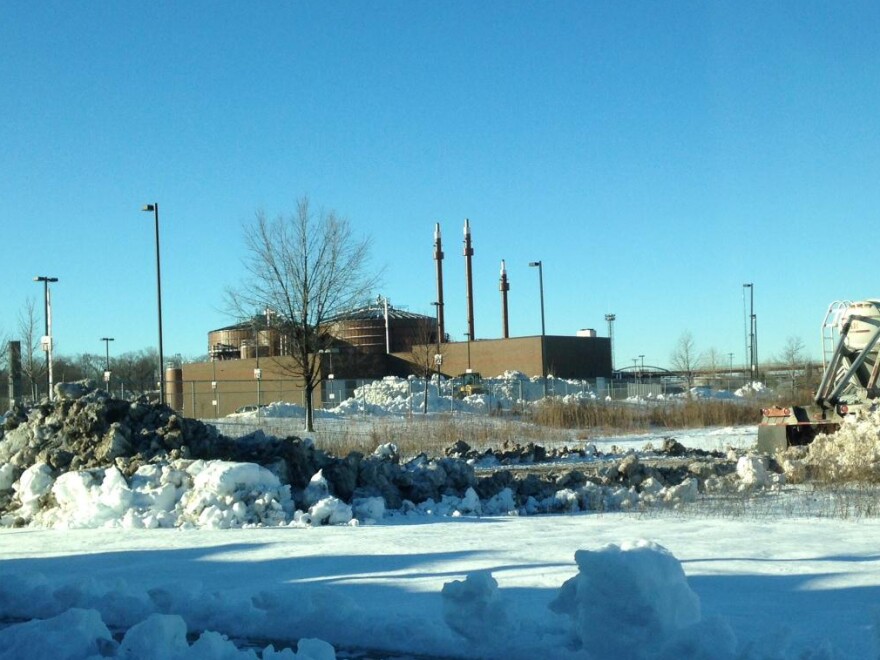Each year, Americans toss out nearly 34 million tons of food – and the vast majority of it ends up in landfills. On Monday, WUWM looked at local efforts to transform food waste to compost. Today, we talk with people converting food into energy.
The sun is about to rise as the first customers straggle into Sendik’s grocery store in Mequon. Inside, Jeff Schutte just finished prepping the produce.

He eyeballs every apple and bunch of asparagus, closely watching expiration dates. “Every morning we have to re-trim and wash all of our vegetables,” Schutte says.
Those trimmings are just part of waste the store generates. Down a few aisles, anything in the deli that doesn’t sell is pitched.
Schutte demonstrates how he handles the waste. He grabs a pineapple that’s over the hill and prepares to switch on what looks like a gigantic kitchen disposal.
“Yup, everything goes in there. You have to make an extra cut on the pineapple to make sure it gets ground up, but basically everything else can go in there. It works miracles," he says.

Director of operations Mark Kahl pats the tank connected to the grinding system.
“It’s 3,600 gallons. It’s pumped out about every eight to nine days. And everything that Jeff and all the other associates would have ground in the old days would have been gone into a 30-yard dumpster, taken away and be put into a landfill,” Kahl says.
Kahl says the system is a grocer’s dream – no odor and less garbage. This store used to fill eight dumpsters of waste per month. "Now it’s being recycled and turned into energy to heat homes,” he says.
Into methane, to be exact.
Megan Taylor helps run Best Waste Solutions. It’s the company that picks up Sendik’s slurried food waste.
This is more than a job to Taylor.
Her father fueled her passion; in fact, he came out of retirement, after a career running a waste transport company because he saw the potential of diverting for higher uses.
“It felt like two generations coming together with two different perspectives. So it was pretty exciting when he started up and I joined in,” Taylor says.

One of her tractor trailers is toting a Sendik’s load to a biodigester in Milwaukee’s Menomonee Valley.
Inside the two giant tanks, microorganisms are at work. They convert the food scraps into biogas that contains methane. In turn, methane is burned to produce energy.
The Forest County Potawatomi Community owns the system and estimates that it generates enough electricity to power about 1,500 homes.
Taylor’s company drops off food waste here six days a week.

Her aim is to increase her company’s food waste stream by 20 percent annually, and eventually, she says clients such as Sendik’s should earn a profit.
“We hope to see a day where businesses actually see a return on what they’re doing because it does have a value. We view it as a commodity,” Taylor says.
Sendik’s Mark Kahl says his company’s decision did not stem from a desire to profit.
“This decision for us was not a monetary investment, this decision for us was truly to be a good steward,” he says.
Kahl anticipates reducing the stores’ combined waste by 80 percent. Sendik’s tested the system at its Mequon location, and then invested tens of thousands of dollars to install it in all 12 of its stores, as well as its distribution center.



